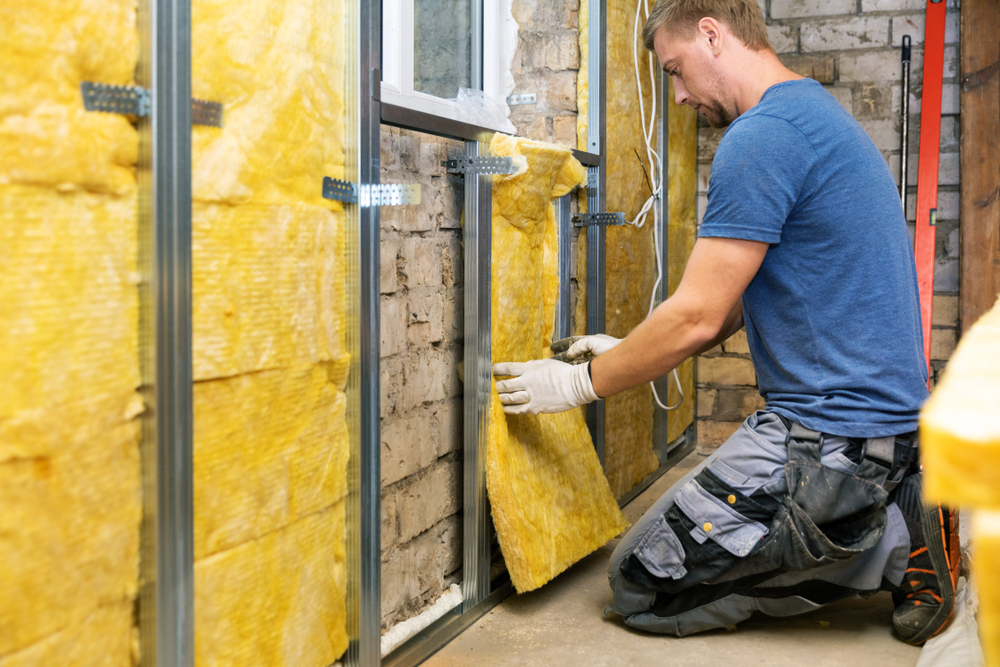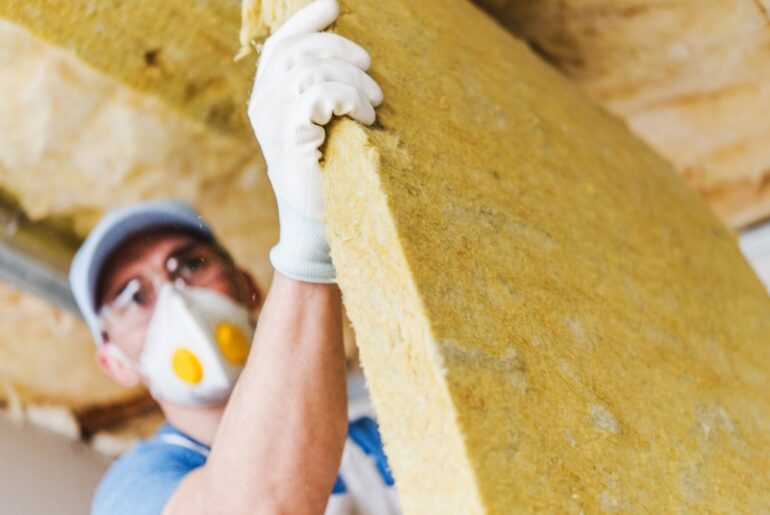Sometimes, working within wall cavities and attics, we encounter electrical wire, junction boxes, and subpanels. Building codes and practices have evolved significantly in recent decades, so older homes may have been wired to a less safe standard than a home built today.
Many do-it-yourselfers have a healthy respect for electrical wires, as they should. To be sure, you should always consult a licensed electrician if you discover suspect electrical connections.
Working with insulation, especially fiberglass insulation, carries its own set of risks as well. Many DIYers want to learn more about how their home works, and working with insulation is a great first-time project.
Here we will describe some of the electrical components you may encounter while insulating. Electrical components are inherently safe to use, but a system in disrepair may present a risk.
Safety Disclaimer (!): As mentioned above, always consult a licensed electrician in case your wiring is exposed or you’re not sure if your insulation materials are safe. Learning to improve your own home is a fantastic activity, but only when done safely.
Can Electricity Go Through Insulation Material?
Most conventional forms of insulation, like cellulose, spray foam, and fiberglass are considered insulators. This means that in their standard form, they will not efficiently conduct electricity. Even older materials like rockwool are generally considered poor conductors of electricity in the normal form.
Conductor vs Insulator: What is the Difference?
Electricity requires something called a conductor to travel from one place to another. An example would be the conductor wire running between your light switch and your light fixture. Because the wire conducts electricity so well, electricity travels from the switch to the fixture very quickly and efficiently.
Other materials, called insulators, do the exact opposite. These materials impede or prevent electricity from traveling through them. For example, rubber is an excellent insulator. That’s why most of your tools have rubber handles. If you accidentally (or intentionally) touch your metal tool to electricity, the electricity cannot pass through the rubber handle and shock you.
Pro Tip:
Never assume a material is a conductor and safe to touch. Just because a screwdriver has a rubber handle doesn’t mean it will insulate you from getting electrocuted. Rubber-handled tools provide an extra layer of protection, not the entire solution.
Is It Dangerous For Wires to Touch Insulation?
Generally, the fear of wires touching insulation is concerned with starting a fire in the event of an electrical short. Some insulation is made from recycled paper products, called cellulose. Regular paper is of course very flammable.
Cellulose insulation, however, is treated with fire-retardant materials during manufacturing. In fact, most cellulose insulation earns a Class 1 fire rating. Cellulose insulation is also designed to reduce the noxious fumes created when some materials burn.
Fiberglass insulation is made from tiny strands of fiberglass that trap air, providing insulation. Fiberglass insulation is designed not to burn, but if the insulation is in batt form it may contain a paper or foil vapor barrier that may be less resistant to heat.
What If My Insulation Gets Wet?
Water is one of the best electricity conductors. Any insulation material that contains some amount of moisture will conduct electricity. As a result, always be aware of downed power lines touching wet insulation, as may occur in storm damage.
Can Fiberglass Insulation Touch Electrical Wires?
Fiberglass insulation can safely touch wires as long as the wire is insulated. Most wiring in residential homes is done with romex, which contains three or four wires inside a jacket. The outer jacket of romex keeps the wires bundled together and provides additional insulation.
Two or three of the wires inside the romex jacket will also be insulated from each other. The insulation on the wires is what allows the wires to be close together without arcing. However, great care should be taken if exposed wiring is discovered, because you can’t tell if it will electrocute you just by looking. Always assume wires are hot until you know they aren’t.
Why Would I Worry if Electrical Wires Touch Insulation?
In standard building practices, contractors go to great lengths to protect electrical systems from damage. Building codes dictate that wires must be kept certain distances from objects that could damage them, like nails and screws.
Can Blown-In Insulation Touch Electrical Wires?
Generally, it’s okay for blown-in insulation to touch the wires between the trusses, like in an attic. If you notice, the wires will be attached somewhere towards the middle of the truss chord, or ceiling joist. Professional electricians are required to mount wires in a way that helps protect them from damage, causing a short.
As long the wires are not damaged, blown-in insulation is safe to install over them. When insulating an attic, take note if you see junction boxes missing a cover. Junction boxes are used to protect connections between wires, but if the cover is missing, the wires aren’t protected.
Can Spray Foam Insulation Touch Electrical Wires?
Closed cell spray expanding foam is a relatively new insulation material. Spray foam is literally sprayed into cavities and allowed to slightly expand, closing small air leaks. Spray foam insulation should not come into contact with electrical wiring.
Most building codes require that electrical wires be protected by conduit if they can come into contact with electrical wiring. Interestingly, the concern is not that the foam will conduct electricity, but that it will seal in heat.
Electrical wires generate a small amount of heat when electricity is passed through them. The insulation around each wire allows it to safely dissipate the heat. Spray foam insulation, however, encapsulates the wire, preventing the heat from dissipating. As a result, the insulation may melt away, allowing the wires to create a short.
Can Rigid Board Touch Electrical Wires?
Rigid board insulation is often used in attics, crawlspaces, and other areas requiring temperature control. Most rigid insulation boards consist of solid foam insulation sandwiched between two sheets of thin aluminum.
Because the outer sheets may be conductive, rigid foam sheets should be trimmed away from electrical wires by at least 2”. In addition, rigid foam materials have been known to burn quickly, especially if unprotected by drywall.
Tips For Installing Insulation Around Wires
Installing insulation around wires is effective at reducing drafts that allow heat to escape your home. In most situations, the wire is passing through a surface, allowing air to pass around it. Most professionals believe the best way to solve this problem is to use fiberglass batts.
Insulating Around Wires Is Simple Using Fiberglass
If you are using loose fiberglass insulation, it is often yellow and an inch or two thick. Simply estimate (or measure) how much insulation the project will need, without stuffing it in. You want the insulation to remain as fluffy as possible.
Now loosely fill the space without packing it. If your insulation has a vapor barrier, you will probably want to remove it. Leaving the vapor barrier will only make the job more difficult and it will provide little benefit.
Lastly, use insulation tape to seal the hole. You don’t need air circulation through the hole, so seal it tightly with insulation tape. Insulation tape is less affected by the immense heat of an attic and provides good adhesion.





